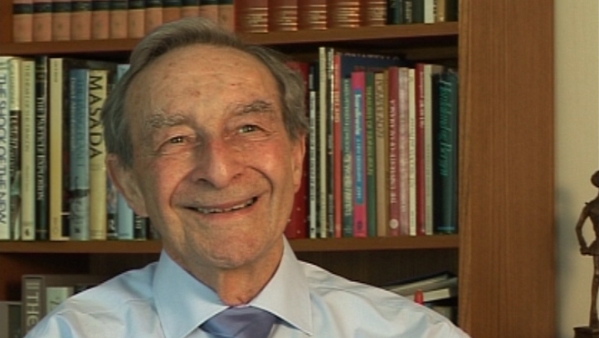NEXT STORY

Settling in to Leeds University
RELATED STORIES

NEXT STORY

Settling in to Leeds University
RELATED STORIES



From the beginning, Basil Lythgoe and Peter Gray – as he succeeded Fred Dainton – all got on very well, and... but one of the things was, as a result of that, that from day one, I was Chairman of the School of Chemistry. So not only did I have to look after the inorganic and structural chemistry, but I had to feel my way into the politics of the School of Chemistry. But it worked out well, and it was three years on, and each one took their turn in this, and then it came around again.
That system worked for a while, but as you well know, progressively over the next two decades, it became clear, particularly with the decrease in funds and so forth, that it became more sensible to have a unitary School of Chemistry, albeit perhaps with sections in it, but it wasn’t a particularly good model to have three entirely independent professors in charge of bits of chemistry, independent in making their appointments, independent in what they taught in the undergraduate courses and so forth.
And there was a little bit of flavour that we’ve alluded to before between physical chemistry in Cambridge as it was, and the other side of chemistry. There is something of that there, and Bristol had the same problem, another department, but now I think virtually all departments of chemistry in the country are – if they haven’t been abolished – at least unitary, and there are identifiable sections, but they are much more coherent. And that, I think, is entirely to the good.
But starting from where I did, as one of the first professors of inorganic chemistry, it was very important in the ‘60s and ‘70s to build up inorganic chemistry as an equal third of the chemistry structure, because before that, many departments had very little inorganic chemistry at all. So I think the separation served its purpose, but after that we came together.
Norman Greenwood (1925-2012) was born in Australia and graduated from Melbourne University before going to Cambridge. His wide-ranging research in inorganic and structural chemistry made major advances in the chemistry of boron hydrides and other main-group element compounds. He also pioneered the application of Mössbauer spectroscopy to problems in chemistry. He was a prolific writer and inspirational lecturer on chemical and educational themes, and held numerous visiting professorships throughout the world.
Title: Unifying chemistry departments at Leeds University
Listeners: Brian Johnson
Professor Brian FG Johnson FRS, FRSE, FRS Chem, FAcad Eu, FAS. Professor of Inorganic Chemistry University of Edinburgh 1991-1995, Professor of Inorganic Chemistry University of Cambridge 1995-2005, Master Fitzwilliam College Cambridge 1999-2005. Research interests include studies of transition metal carbonyls, organometallic chemistry, nano- particles and homogeneous catalysis. Professor Johnson is the author of over 1000 research articles and papers.
Tags: School of Chemistry, Leeds University, Cambridge University, Bristol University, Basil Lythgoe, Peter Gray, Fred Dainton
Duration: 2 minutes, 17 seconds
Date story recorded: May 2011
Date story went live: 25 November 2011